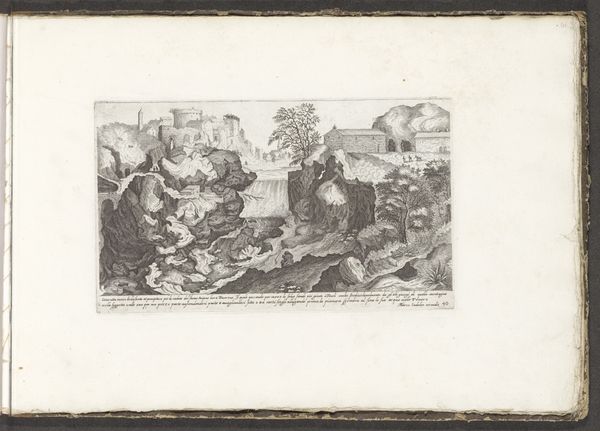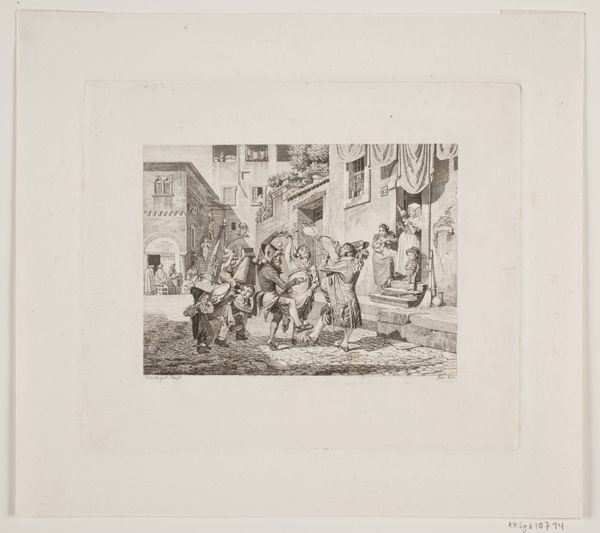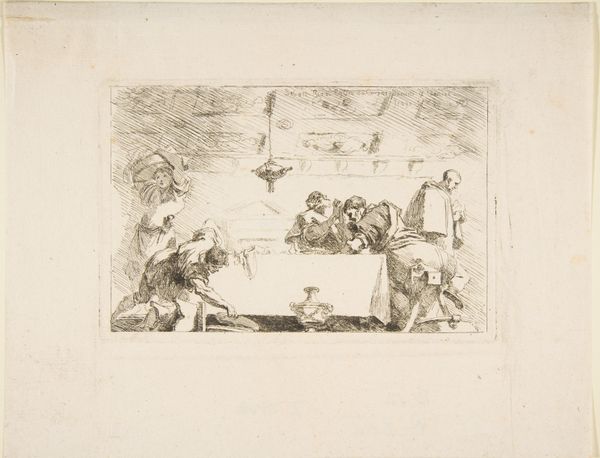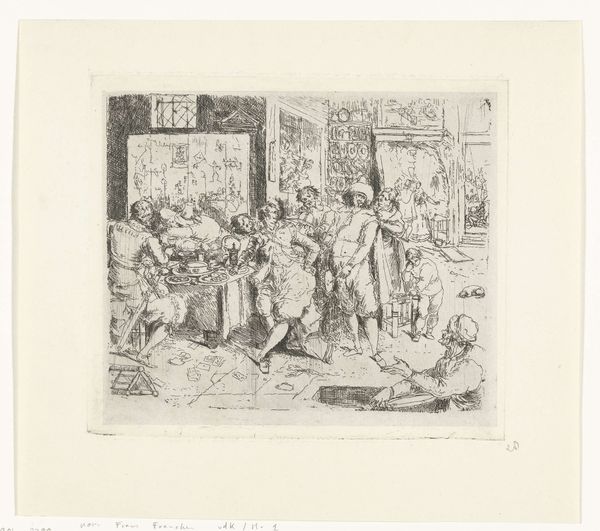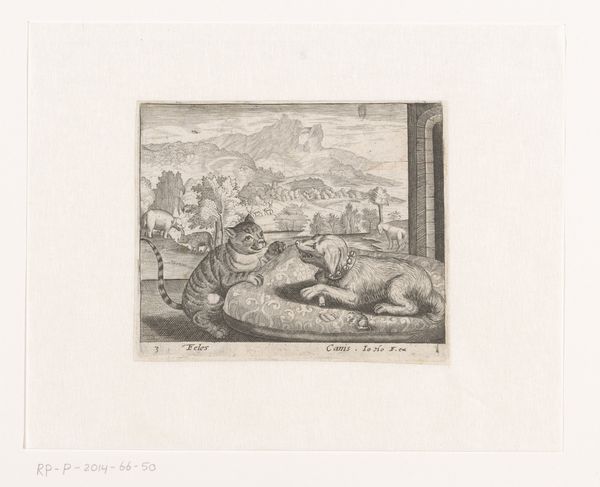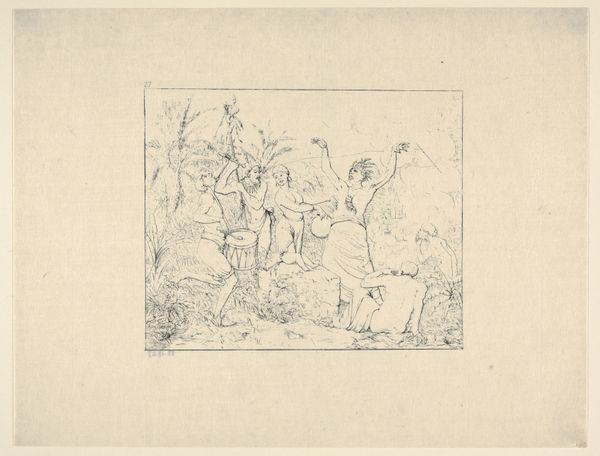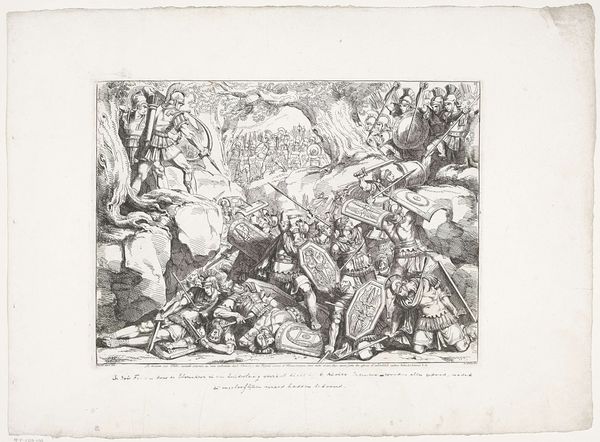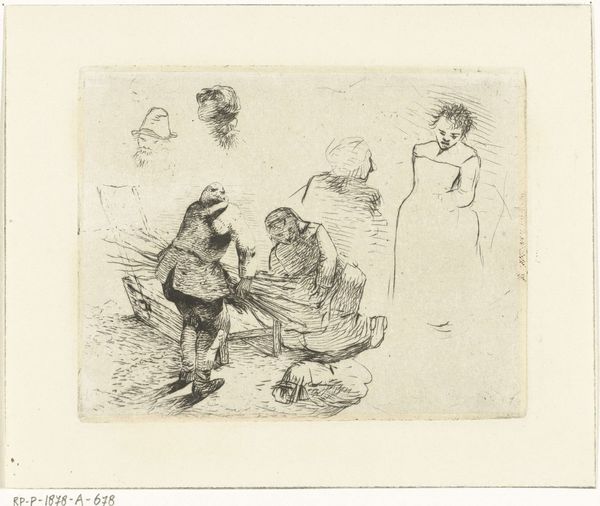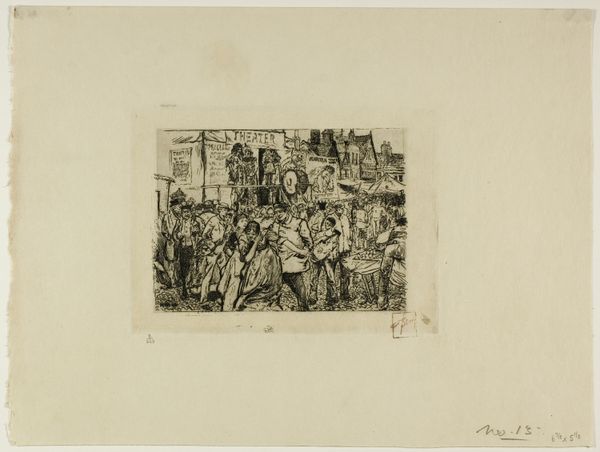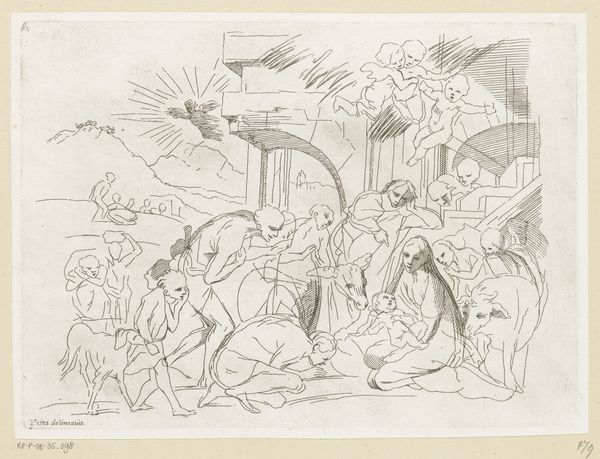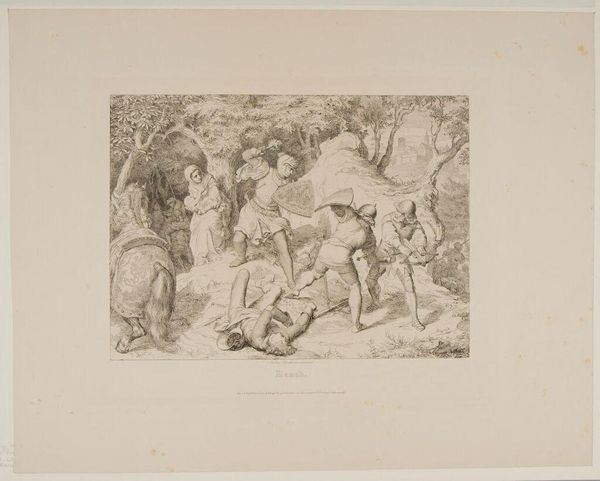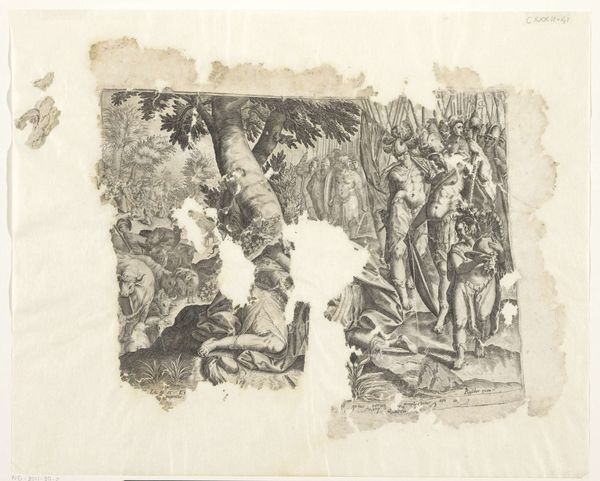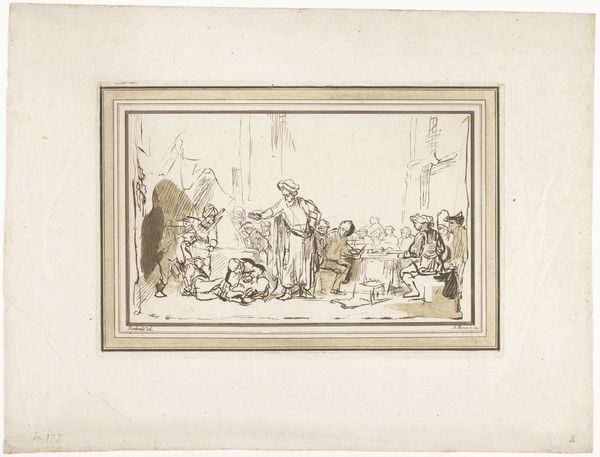
Dimensions: height 298 mm, width 364 mm
Copyright: Rijks Museum: Open Domain
Johann Heinrich Ramberg created "De Repetitie" with etching techniques, a printmaking process dating back to the Middle Ages. A metal plate, usually copper, is coated with a waxy, acid-resistant substance. The artist then scratches an image into this coating, exposing the metal underneath. The plate is submerged in acid, which bites into the exposed lines, creating grooves. Ink is applied to the plate, filling these grooves, and the surface is wiped clean. Finally, paper is pressed against the plate, transferring the ink and resulting in a print. The thinness of the lines gives the image its immediacy, as if it were a sketch. As a medium, etching democratized image-making; it allowed for relatively quick and inexpensive reproduction, contributing to the spread of ideas. The print medium itself has social significance here. It represents a shift towards mass production and dissemination of images, a precursor to modern media culture. In Ramberg's world, the traditional skills of the artist intersected with the burgeoning forces of industry, resulting in works like this one.
Comments
No comments
Be the first to comment and join the conversation on the ultimate creative platform.
